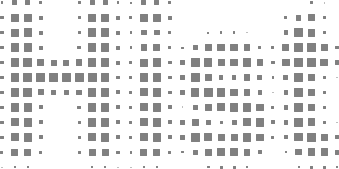Hist is an analyst-friendly front-end for boost-histogram, designed for Python 3.8+ (3.6-3.7 users get older versions). See what's new.
You can install this library from PyPI with pip:
python3 -m pip install "hist[plot,fit]"If you do not need the plotting features, you can skip the [plot] and/or
[fit] extras. [fit] is not currently supported in WebAssembly.
Hist currently provides everything boost-histogram provides, and the following enhancements:
-
Hist augments axes with names:
name=is a unique label describing each axis.label=is an optional string that is used in plotting (defaults tonameif not provided).- Indexing, projection, and more support named axes.
- Experimental
NamedHistis aHistthat disables most forms of positional access, forcing users to use only names.
-
The
Histclass augmentsbh.Histogramwith simpler construction:flow=Falseis a fast way to turn off flow for the axes on construction.- Storages can be given by string.
storage=can be omitted, strings and storages can be positional.data=can initialize a histogram with existing data.Hist.from_columnscan be used to initialize with a DataFrame or dict.- You can cast back and forth with boost-histogram (or any other extensions).
-
Hist support QuickConstruct, an import-free construction system that does not require extra imports:
- Use
Hist.new.<axis>().<axis>().<storage>(). - Axes names can be full (
Regular) or short (Reg). - Histogram arguments (like
data=) can go in the storage.
- Use
-
Extended Histogram features:
- Direct support for
.nameand.label, like axes. .density()computes the density as an array..profile(remove_ax)can convert a ND COUNT histogram into a (N-1)D MEAN histogram..sort(axis)supports sorting a histogram by a categorical axis. Optionally takes a function to sort by..fill_flattened(...)will flatten and fill, including support for AwkwardArray..integrate(...), which takes the opposite arguments as.project.
- Direct support for
-
Hist implements UHI+; an extension to the UHI (Unified Histogram Indexing) system designed for import-free interactivity:
- Uses
jsuffix to switch to data coordinates in access or slices. - Uses
jsuffix on slices to rebin. - Strings can be used directly to index into string category axes.
- Uses
-
Quick plotting routines encourage exploration:
.plot()provides 1D and 2D plots (or useplot1d(),plot2d()).plot2d_full()shows 1D projects around a 2D plot..plot_ratio(...)make a ratio plot between the histogram and another histogram or callable..plot_pull(...)performs a pull plot..plot_pie()makes a pie plot..show()provides a nice str printout using Histoprint.
-
Stacks: work with groups of histograms with identical axes
- Stacks can be created with
h.stack(axis), using index or name of an axis (StrCategoryaxes ideal). - You can also create with
hist.stacks.Stack(h1, h2, ...), or usefrom_iterorfrom_dict. - You can index a stack, and set an entry with a matching histogram.
- Stacks support
.plot()and.show(), with names (plot labels default to original axes info). - Stacks pass through
.project,*,+, and-.
- Stacks can be created with
-
New modules
intervalssupports frequentist coverage intervals.
-
Notebook ready: Hist has gorgeous in-notebook representation.
- No dependencies required
from hist import Hist
# Quick construction, no other imports needed:
h = (
Hist.new.Reg(10, 0, 1, name="x", label="x-axis")
.Var(range(10), name="y", label="y-axis")
.Int64()
)
# Filling by names is allowed:
h.fill(y=[1, 4, 6], x=[3, 5, 2])
# Names can be used to manipulate the histogram:
h.project("x")
h[{"y": 0.5j + 3, "x": 5j}]
# You can access data coordinates or rebin with a `j` suffix:
h[0.3j:, ::2j] # x from .3 to the end, y is rebinned by 2
# Elegant plotting functions:
h.plot()
h.plot2d_full()
h.plot_pull(Callable)From a git checkout, either use nox, or run:
python -m pip install -e .[dev]See Contributing guidelines for information on setting up a development environment.
We would like to acknowledge the contributors that made this project possible (emoji key):
Henry Schreiner 🚧 💻 📖 |
Nino Lau 🚧 💻 📖 |
Chris Burr 💻 |
Nick Amin 💻 |
Eduardo Rodrigues 💻 |
Andrzej Novak 💻 |
Matthew Feickert 💻 |
Kyle Cranmer 📖 |
Daniel Antrim 💻 |
Nicholas Smith 💻 |
Michael Eliachevitch 💻 |
Jonas Eschle 📖 |
This project follows the all-contributors specification.
- 2021-07-07 PyHEP 2021 -- High-Performance Histogramming for HEP Analysis 🎥
- 2020-09-08 IRIS-HEP/GSOC -- Hist: histogramming for analysis powered by boost-histogram 🎥
- 2020-07-07 SciPy Proceedings 🎥
- 2020-07-17 PyHEP 2020 🎥
This library was primarily developed by Henry Schreiner and Nino Lau.
Support for this work was provided by the National Science Foundation cooperative agreement OAC-1836650 (IRIS-HEP) and OAC-1450377 (DIANA/HEP). Any opinions, findings, conclusions or recommendations expressed in this material are those of the authors and do not necessarily reflect the views of the National Science Foundation.






